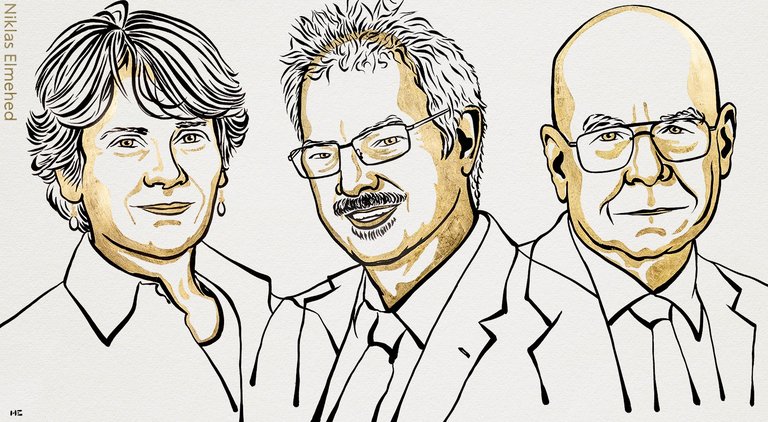Nobel Prize in Chemistry: Recognition of inventors and those who have led Click to living things

The Nobel committee has announced that the prize has been for Carolyn R. Bertozzik, Morten Meldal and K. Barry Sharpless will be the winner of the 2022 Nobel Prize in Chemistry, “for the development of click and bioorthogonal chemistry.”
The prediction specifies that Sharpless and Meldal invented a functional form of chemistry, click chemistry. through which the molecular building blocks unite in a simple and effective way. Bertozzy, for his part, clicked on another dimension and took it to living organisms. Currently, bioorthogonal reactions developed by it are used to provide more accurate cancer treatments.
It should be noted that Sharpless also received the Nobel Prize in Chemistry in 2001, for his research on chiral catalysis. Well, it was then that the concept of click chemistry emerged, a simple and effective way to do chemistry, with quick reactions and without involuntary collateral products.
Facilitating difficult processes
Until then, chemists were trying to make molecules similar to what was in nature, for example, to get drugs. They were complex and long processes. For example, the way to produce large-scale antibiotic meropenem required six years of development.
To fix this, Sharpless proposed the concept of building blocks, rather than trying to mimic nature's complex molecules, starting from the simplest molecules and linking together to get functional molecules. He called chemistry click. The molecules that are generated are different from those that exist in nature, but they can have the same function and be generated on an industrial scale. In 2001 it published the chemical criteria, including, for example, the presence of oxygen in the environment and the possibility of doing so in water, which is a cheap and clean solvent.
For his part, Meldal was also developing methods of forming molecules for pharmaceutical use. He made giant bazaar libraries with hundreds of thousands of substances and tested his ability to stop pathogenic processes. In one of these tests the result was unexpected: if an alkali joined a azide and the reaction was controlled by copper ions, there was no substance formed, there was no lateral product. Meldal also presented these results in 2001, and the following year he published a paper showing that this reaction could be used to unite many types of patients.
And that same year, Sharpless published another work just with the same reaction and showing that you could do it in the water. He said Clic was an “ideal” reaction.
It is currently used in many fields, from research laboratories to industry, for example, to give the materials specific characteristics (bringing electricity, absorbing the Sun, killing bacteria, protecting themselves from UV radiation…) or to create new pharmaceutical substances.
Step inside the cell
Carolyn Bertozzi went one more step by developing click reactions that work on living organisms. The professor of Organic Chemistry Jesús Mari Aizpurua Iparragirre of Bertozzi explained this in Elhuyar magazine in March 2010. “Once cells are fed with a special azide sugar (azide with mannose), membranes are covered from the azide group. Immediately after clicking on the fluorescent molecule that contains the alkali group, the cells become fluorescent… and survive! Similar to this procedure have been tested on larger living beings such as mussel.”
Bertozzi himself has developed a method based on his procedure to break the glycans of tumor cells. Glycans protect tumors from the immune system. To counteract this, Bertozzi has developed an antibody that binds to glycans, which is blocked in it, for the immune system to do its job. Currently, they have started testing on people with advanced cancer.
Many other researchers have also begun to perform other antibodies, some attach to the tumor and another antibody injects a radioisotope for follow-up, or injects radiation to kill the cancer cell.
The Nobel Committee has no doubt that they have done innovative, useful and clear work for the benefit of mankind. “Stylish.”
Buletina
Bidali zure helbide elektronikoa eta jaso asteroko buletina zure sarrera-ontzian











